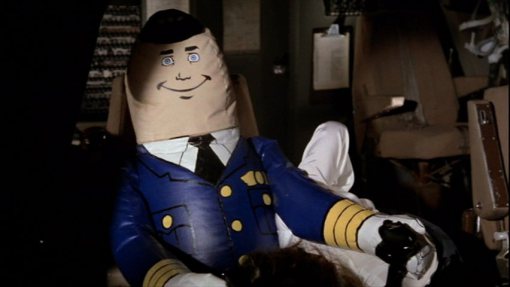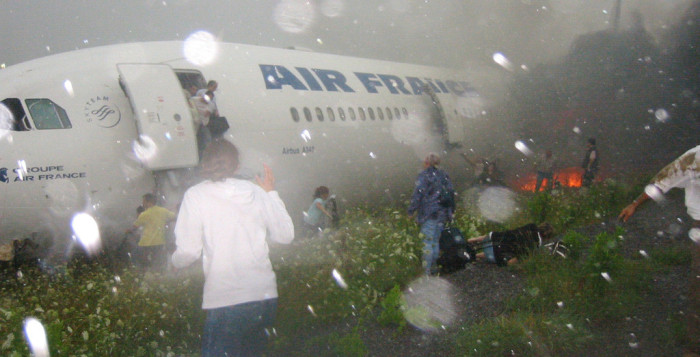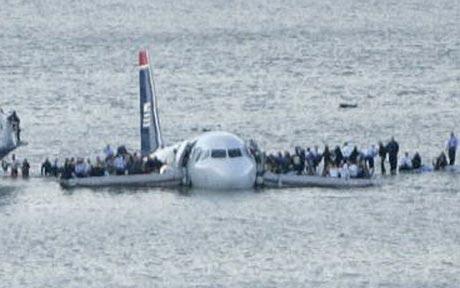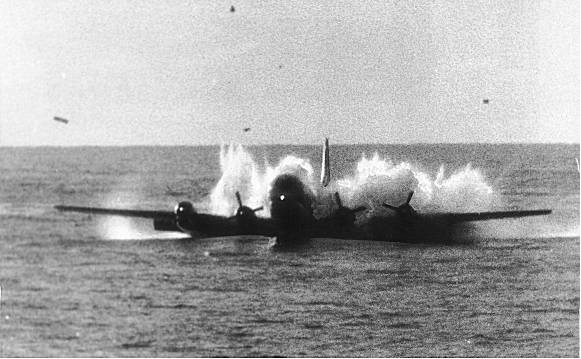
Flying is such a common occurrence these days that it’s almost a non-event. We’re pre-programmed to sit upright on take-off and landing, keep our arm-rests down, seatbelts on, but why? Time and time again, everyone asks the same questions about flying.
It’s a sad fact that most of the procedures we go through, and the weird rituals we must follow on board an aircraft, are in direct response to fatal accidents that have happened. So in this article I hope to dispel some myths and explain exactly why it’s important to follow the instructions given by your flight attendants (FAs).
It might just save your life.
Why does my window shade need to be up on take-off and landing?
This is the question I get asked most often and there are many assumptions, commonly: it’s so accident investigators can see the bodies in the plane if there’s a crash.
Not true, in fact, quite the reverse. Take-off and landing are historically the two most dangerous phases of flight, statistics back this up comprehensively. So if you’re going to be in a plane crash that’s when it’s most likely to happen. But most aviation accidents are survivable, in fact most are as much of a non-event as the flight in the first place.
One of the most terrifying things to occur on an aircraft is a fire. Whether that is a galley fire or an engine bursting into flames, it’s not a comforting experience. You’re on a craft filled with potentially hundreds of thousands of pounds of Jet-A and the lowest number of exits the manufacturer and airline could get away with (doors are relatively heavy increasing fuel consumption, and you can’t sell Sprite and peanuts to emergency exits…). So with that in mind, if you have a crash, you’ll really want to know where the big pools of flaming jet fuel are so you can leave the big metal bird from the exits on the other side.
Air France 358 overshot the runway at Toronto’s Pearson International Airport in Canada on 2nd August 2005, it slid into a creek at the end of the runway and burst into flames. The aircraft, or “equipment”, was an Airbus A340-313X and there were 309 people on board. This is the result:

Thanks to being able to see where the safest exists to use were, all 309 survived!

Also, by opening the window shades it goes some way to equalising the light between the inside and outside, so that in an evacuation, you don’t have every passenger pausing at the door blinking while their eyes acclimatise to the change in light.
Why do they dim the lights on take off and landing?
This is directly related to the window shades answer above. This equalises the light inside and outside the fuselage, with a bias toward being able to see outside – which is important as described above.
This also makes the emergency lighting in the aisles more visible, which will guide you to the exits.
Does my seat really need to be upright on take off and landing?
This again comes back to the fact that take off and landing are the most dangerous phases of flight. If you need to make an emergency landing from 37,000ft you have plenty of time of get everyone ready for it. If a problem happens at 400ft (or even at 0-feet) you want to have the cabin already configured for the maximum survivability.
Have you tried squeezing behind a reclined seat to get to the toilet on a flight?
Add in some panic, some fire, smoke, some injuries and a strong urge to disembark the burning wreckage of your recently crashed air shuttle and you can see why this simple act can save lives.
Why do they say not to inflate your life jacket until you’ve left the aircraft?
It sounds counter-intuitive, I mean you want to be prepared as much as possible during an evacuation! But unfortunately this directive is a result of several fatal crashes into water where passengers inflated their life jackets inside the aircraft and were trapped in air pockets within a sinking plane. By leaving your life jacket un-inflated, you can swim under water and get to exits below the waterline.
One such example of this tragic, and frankly horrifying-to-consider, scenario is from November 1996. Ethopian Airlines flight 961 was taken over by hijackers who told the pilot to fly to Australia. The flight was only an internal flight within Africa and didn’t have enough fuel to get to Australia, the pilots, of course, knew this and intentionally stayed close to the coast (despite protests by the hijackers).
The rest, is history:
Despite this seemingly catastrophic crash, 50 people survived. Of the 125 killed it is thought that a large number of them died by inflating their life jackets while still inside the aircraft.
Is a water landing likely to end well?
It goes without saying that landing on water is not the norm. It is an extremely rare situation and is ‘hazardous’ to say the least.
Pilots are trained to some degree on how to ditch an aircraft in a body of water. In fact, Airbus even has a Ditch button in the cockpit which closes all the holes on the outside of the fuselage to make the aircraft more likely to float for an extended period of time.
Waves are a big concern when landing on water. It is generally accepted that you want to land on a wave that is at its peak, rather than one that is sinking away or rising towards you. Ideally, you want a flat-calm.
In ideal circumstances, landing on water shouldn’t be a guaranteed death-sentence. There is one very popular example of this, courtesy of Captain Chesley Burnett “Sully” Sullenberger III, who executed the well-published Miracle on the Hudson:


Sometimes things don’t go so well. And it usually bad weather and the resulting choppy seas that mean a clean landing on water isn’t going to happen.
Will wearing a seatbelt really make any difference?
Billy Connolly suspects not (contains swearing).
However, history proves otherwise. Rationally, blasting through the sky in a 200-ton pressurised tube with wings full of jet fuel at more than 500mph sounds fraught with potential for catastrophe. and yet accidents are astonishingly few and far between. It is the almost-accidents that show how important it is to clunk-click every trip.
There have been occasions where aircraft have hit sudden, unexpected down-draughts or wind-shear (where an aircraft encounters air travelling in a different direction).
Like in 2008, when 119 people were injured after their QANTAS aircraft suddenly plunged 650ft, sometimes a computer issue can cause an aircraft to behave erratically.
Basically, heed that advice that your FAs will give you at the start of the flight recommending you keep your belt “loosely fastened” throughout.
Do I really need to wait for the seatbelt light to go out to unbuckle after landing?
Yes! Some airports have strange requirements for “docking” an aircraft. Orlando Sandford in Florida, for example, used to require the aircraft to park slightly away from the jetway (at which point the pilots would usually shut down the engines and switch over to the auxiliary power unit – APU – in the tail of the plane, and everybody would start unbuckling) and then the ramp staff would connect a ‘tug’ vehicle to the nosewheel and pull it properly onto stand. This lurch would usually send many impatient people flying (if you’ll pardon the pun).
These special requirements for docking/parking are becoming more common as we see larger and larger aircraft taking to the skies – and ultimately have to find ways of shimmying a craft capable of carrying 700 people up to an arrivals gate.
What if I have other questions about flying?
Put them in the comments below and I’ll be happy to answer them as part of another article.
